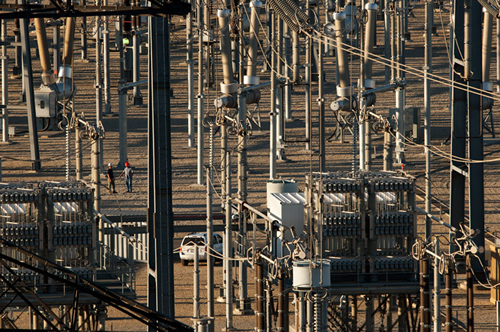There’s a fundamental flaw with fan-and-heatsink cooling systems: no matter how hard the fan blows, a boundary layer of motionless, highly-insulating air remains on the heatsink. You can increase the size of the heatsink and you can blow more air, but ultimately the boundary layer prevents the system from being efficient; it’s simply a physical limitation of fan-and-heatsink cooling systems in specific, and every kind of air-cooled heat exchanger in general, including air conditioning and refrigeration units.
But what if you did away with the fan? What if the heatsink itself rotated? Well, believe it or not, rotating the heat exchanger obliterates the boundary layer, removes the need for a fan, and it’s so efficient that it can operate at low and very quiet speeds. Ladies and gentlemen, I give you the Air Bearing Heat Exchanger [PDF]. Developed by Jeff Koplow, a researcher at the US government’s Sandia National Laboratories, the new heatsink (which has also been dubbed the “Sandia Coolerâ€) basically resembles a big, metal fan. The cooler consists of a static metal baseplate, which is connected to the CPU, GPU, or other hot object, and a finned, rotating heat exchanger that are cushioned by a thin (0.001-inch) layer of air. As the metal blades spin, centrifugal force kicks up the air and throws it up and outwards, much like an impeller, creating a cooling effect.
 This new technique is so efficient that if these heat exchangers can find widespread adoption in computers and air conditioning units, Koplow estimates that the total US electricity consumption could drop by 7%. Furthermore, if you’re a computer geek, there’s another big advantage of the Air Bearing Heat Exchanger: it’s intrinsically immune to the build up of dust and detritus. The Sandia Cooler may also be the technology that smashes down the “Thermal Brick Wall†that is preventing computer chips from moving beyond 3GHz.
This new technique is so efficient that if these heat exchangers can find widespread adoption in computers and air conditioning units, Koplow estimates that the total US electricity consumption could drop by 7%. Furthermore, if you’re a computer geek, there’s another big advantage of the Air Bearing Heat Exchanger: it’s intrinsically immune to the build up of dust and detritus. The Sandia Cooler may also be the technology that smashes down the “Thermal Brick Wall†that is preventing computer chips from moving beyond 3GHz.
So when can you get your hands on one? Koplow is now working on a design that can be mass-produced — and hopefully he’ll soon be able to bring this awesome piece of technology to market.
Read more at New Scientist or read the research paper


